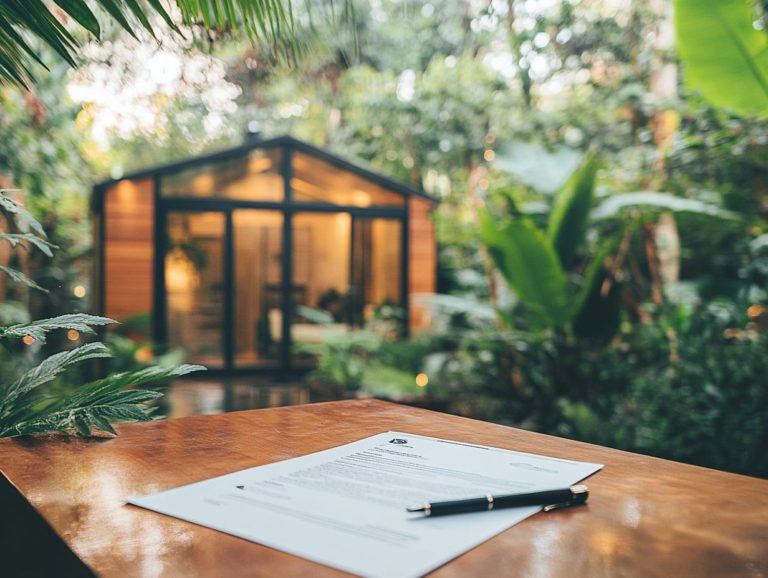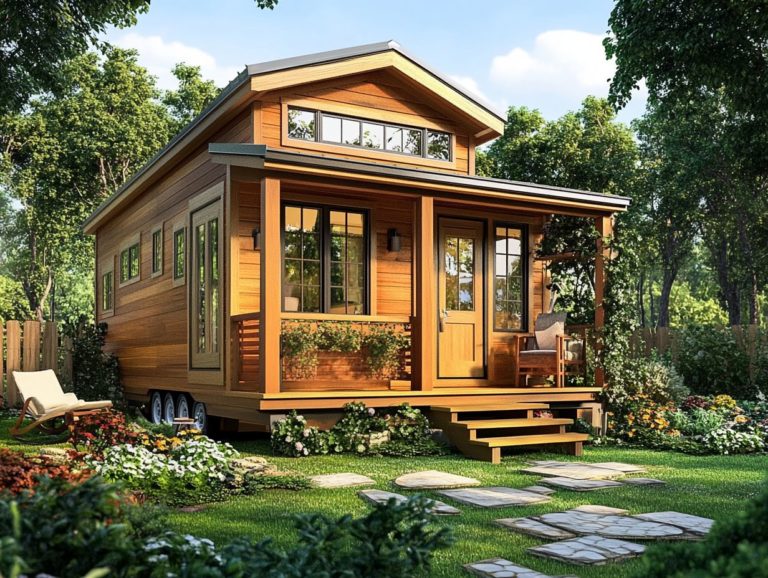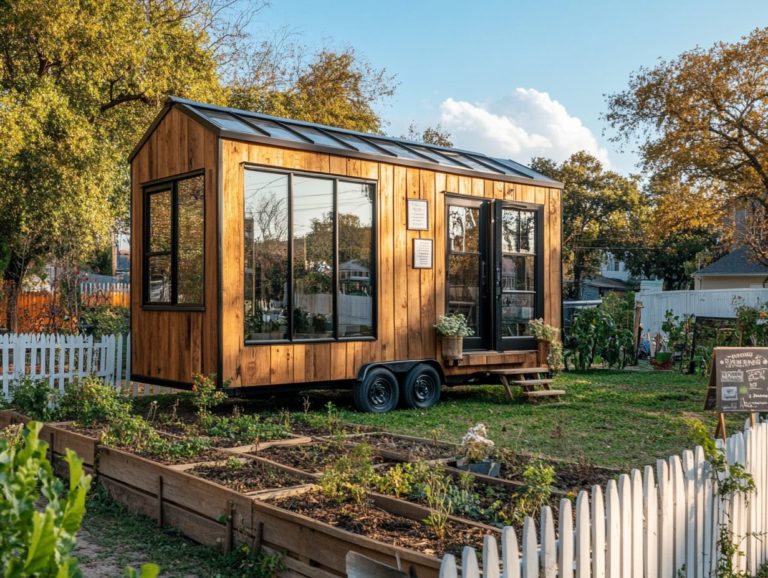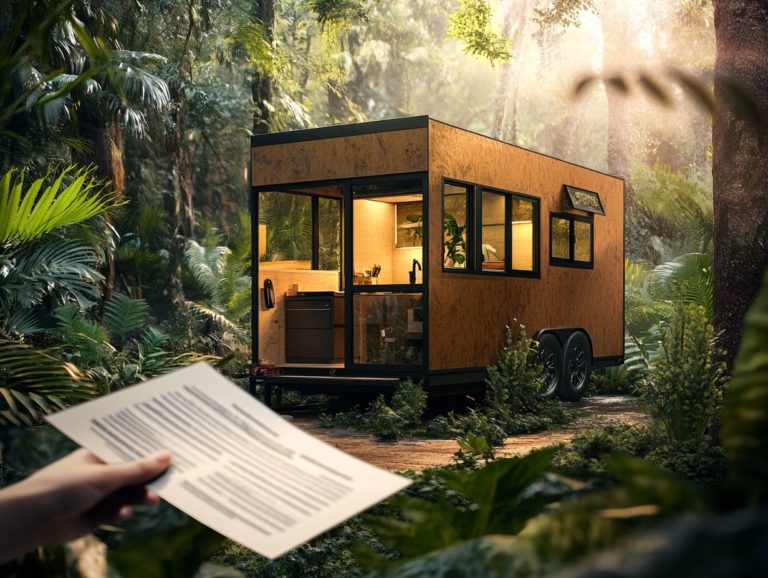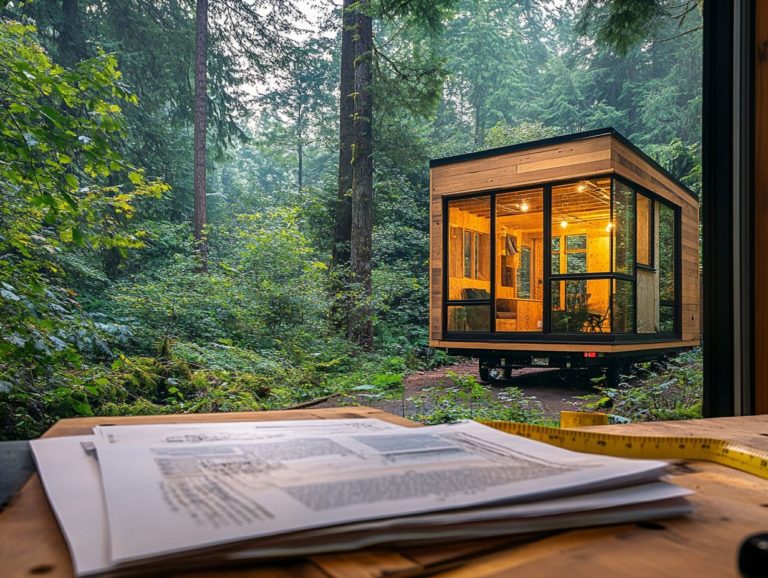Exploring Tiny House Insurance Laws
Considering a tiny house lifestyle? Downsizing offers you a sense of freedom and simplicity, but it also introduces unique insurance challenges.
This article breaks down the essentials of tiny house insurance. It guides you through what defines a tiny house and the specific coverage you need. You ll learn about the differences between homeowners and RV insurance, the factors that influence your rates, and the legal hurdles you may encounter.
Plus, discover tips for securing affordable coverage tailored to your unique living space. Ready to protect your tiny home investment? Let s dive in!
Contents [hide]
- Key Takeaways:
- Understanding Tiny Houses and Insurance
- Types of Insurance Coverage for Tiny Houses
- Homeowners Insurance vs. RV Insurance
- Factors Affecting Insurance Rates for Tiny Houses
- Location, Size, and Features
- Challenges of Insuring Tiny Houses
- Legal and Regulatory Obstacles
- How to Find Affordable Insurance for Your Tiny House
- Frequently Asked Questions
- What is a tiny house and why would I need insurance for it?
- Are there specific insurance laws for tiny houses and ADUs?
- What type of insurance coverage do I need for my tiny house or mobile home?
- Can I get RV insurance for a tiny house that is on wheels?
- What factors affect the cost of tiny house insurance?
- What should I consider when choosing an insurance provider for my tiny house or DIY builds?
Key Takeaways:
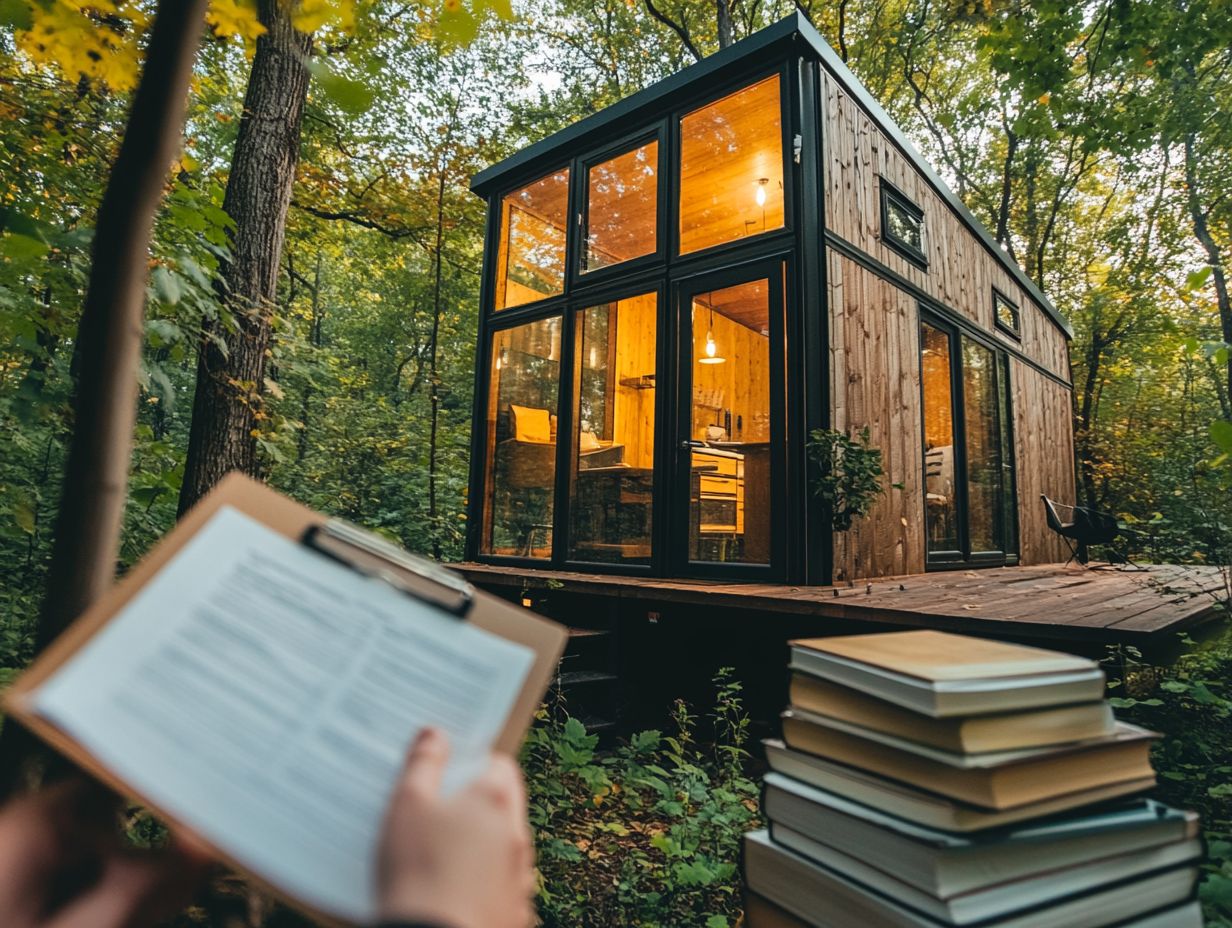
- Tiny houses have unique insurance needs that differ from traditional homes and RVs.
- Location, size, and features can affect insurance rates for tiny houses.
- Legal and regulatory obstacles can make it challenging to find affordable insurance for tiny houses.
Understanding Tiny Houses and Insurance
Understanding tiny houses and their insurance needs is important today. The tiny house movement is growing, offering both financial savings and unique challenges.
Homeowners must navigate the complexities of building codes and responsibility issues tied to tiny living. For detailed insights, refer to tiny house regulations: a state-by-state guide. Engaging with certified builders and experienced insurance agents will empower you to secure the necessary homeowners insurance and specialty options tailored to your needs.
Defining Tiny Houses and Their Unique Insurance Needs
Tiny houses, characterized by their compact design and innovative features, have unique insurance needs that diverge significantly from those of traditional homes.
Typically spanning from 100 to 400 square feet, these charming abodes often use lightweight materials like reclaimed wood, steel frames, and eco-friendly insulation. These factors present distinct considerations for you as a prospective owner.
Given their often mobile nature, you’ll need to navigate specific insurance challenges, especially concerning personal property and do-it-yourself homes. Unlike conventional real estate, where structures are generally anchored permanently to land, tiny homes may require specialized policies that encompass liability, personal property, and the inherent risks tied to self-built structures. Additionally, understanding tiny house zoning laws is crucial to tailor adequate coverage that safeguards both your tiny haven and its contents.
Types of Insurance Coverage for Tiny Houses
You have various insurance options for your tiny house. Choosing between homeowners insurance and RV insurance is a key decision that reflects the diverse lifestyles of tiny house owners, whether they re parked in one spot or on the move.
Specialty insurance products can provide extra protection for your personal belongings and the unique features of your tiny home. It’s essential to understand tiny house laws for your financial security.
Homeowners Insurance vs. RV Insurance
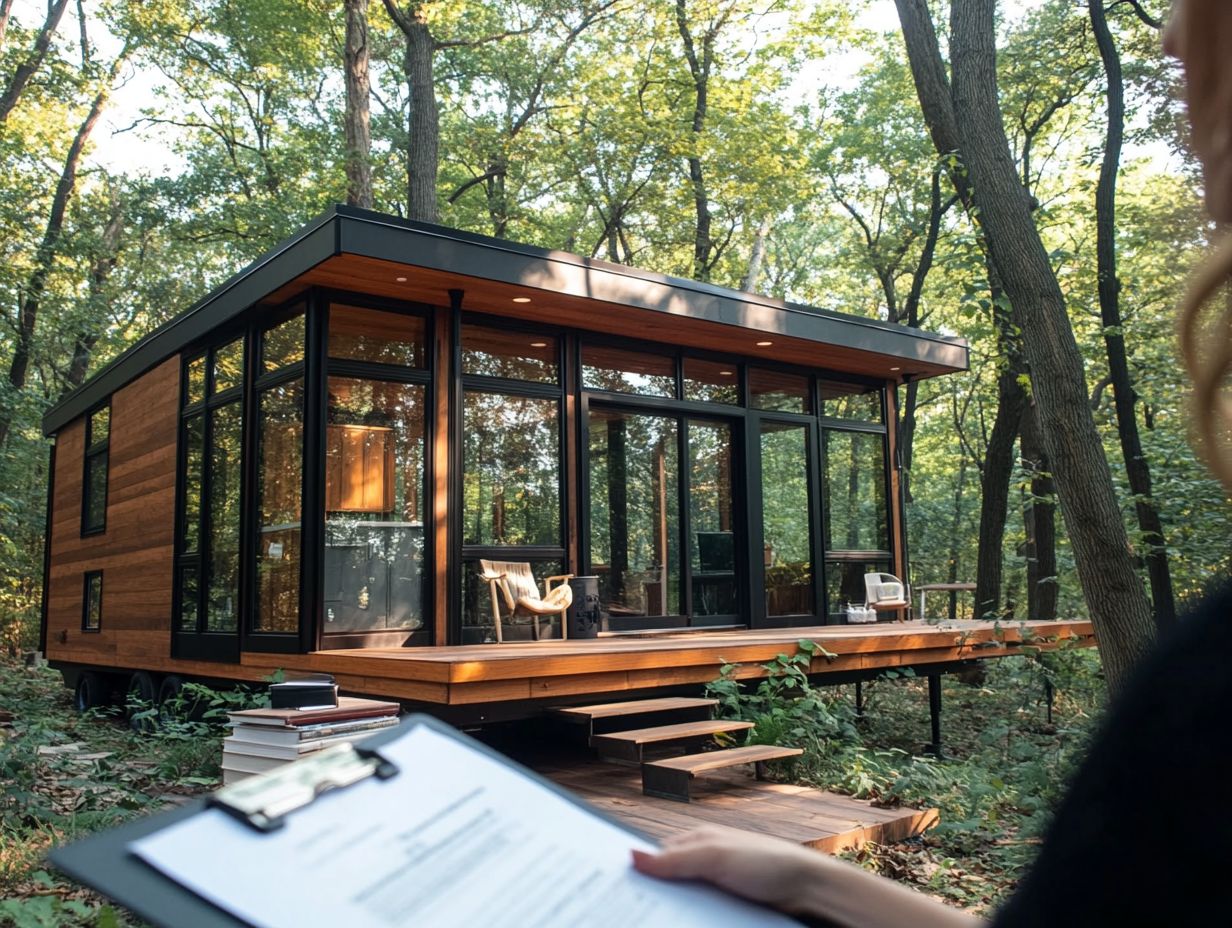
Ready to decide between homeowners insurance and RV insurance? Your choice affects your protection and costs! Choosing between homeowners insurance and RV insurance for tiny houses is an important choice that profoundly influences both your protection level and insurance costs.
As a tiny homeowner, you must thoughtfully consider your unique living circumstances against the coverage options available to you. Homeowners insurance generally offers broader coverage for structures and personal property, often extending to claims that might arise if someone gets hurt on your property. RV insurance, on the other hand, caters specifically to mobile living, covering risks related to travel and camping. Additionally, it’s important to understand the impact of local laws on tiny house living to ensure compliance with regulations in your area.
Each policy type comes with its own set of exclusions. For instance, homeowners insurance might not cover damage caused by certain natural disasters like floods, whereas RV insurance frequently excludes coverage during specific events or in particular locations. Understanding these distinctions gives tiny house owners the power to make informed decisions that protect their investment and lifestyle, ultimately leading to a sense of peace of mind.
Factors Affecting Insurance Rates for Tiny Houses
Several factors significantly influence insurance rates for tiny houses, including location, size, and unique features of the structure. Insurance providers meticulously evaluate the risks linked to different geographical areas, taking into account aspects like vulnerability to extreme weather or the potential hazards posed by nearby tree branches.
The materials used in your tiny house’s construction also play a key role in shaping your coverage options. It’s essential for homeowners to grasp how these elements can impact both their insurance costs and the insurance options for tiny houses as well as the challenges they may encounter with coverage.
Location, Size, and Features
When you’re evaluating insurance options for your tiny house, it’s crucial to consider three primary factors location, size, and features that significantly impact the insurance market.
The geographical area where your tiny home is located plays a vital role in determining your coverage needs. For instance, if your home is in a coastal zone prone to hurricanes, you may require more comprehensive policies compared to a home nestled in a rural setting, where risks tend to be lower. Additionally, it’s important to be aware of the legal risks of building a tiny house in your area.
The size of your tiny house also affects risk assessments. While smaller structures might seem less vulnerable, they often lack the durability of standard homes, which can change how they’re categorized for insurance purposes.
Unique features like solar panels or custom kitchens can complicate your coverage. These elements may necessitate specialized policies that comply with specific building codes and regulations unique to your area.
Challenges of Insuring Tiny Houses
Insuring tiny houses involves navigating a landscape filled with unique challenges that you, as a homeowner, must address. These challenges often arise from legal and regulatory hurdles that can complicate the insurance process.
The evolving tiny house movement introduces a variety of insurance intricacies, particularly regarding compliance with building codes and insurance requirements that can vary significantly by state or municipality. Additionally, it’s crucial for you to assess your financial stake in the property. To navigate these complexities, consider exploring the legalities of tiny house communities and seek guidance from seasoned insurance agents who can help you mitigate potential risks effectively.
Legal and Regulatory Obstacles
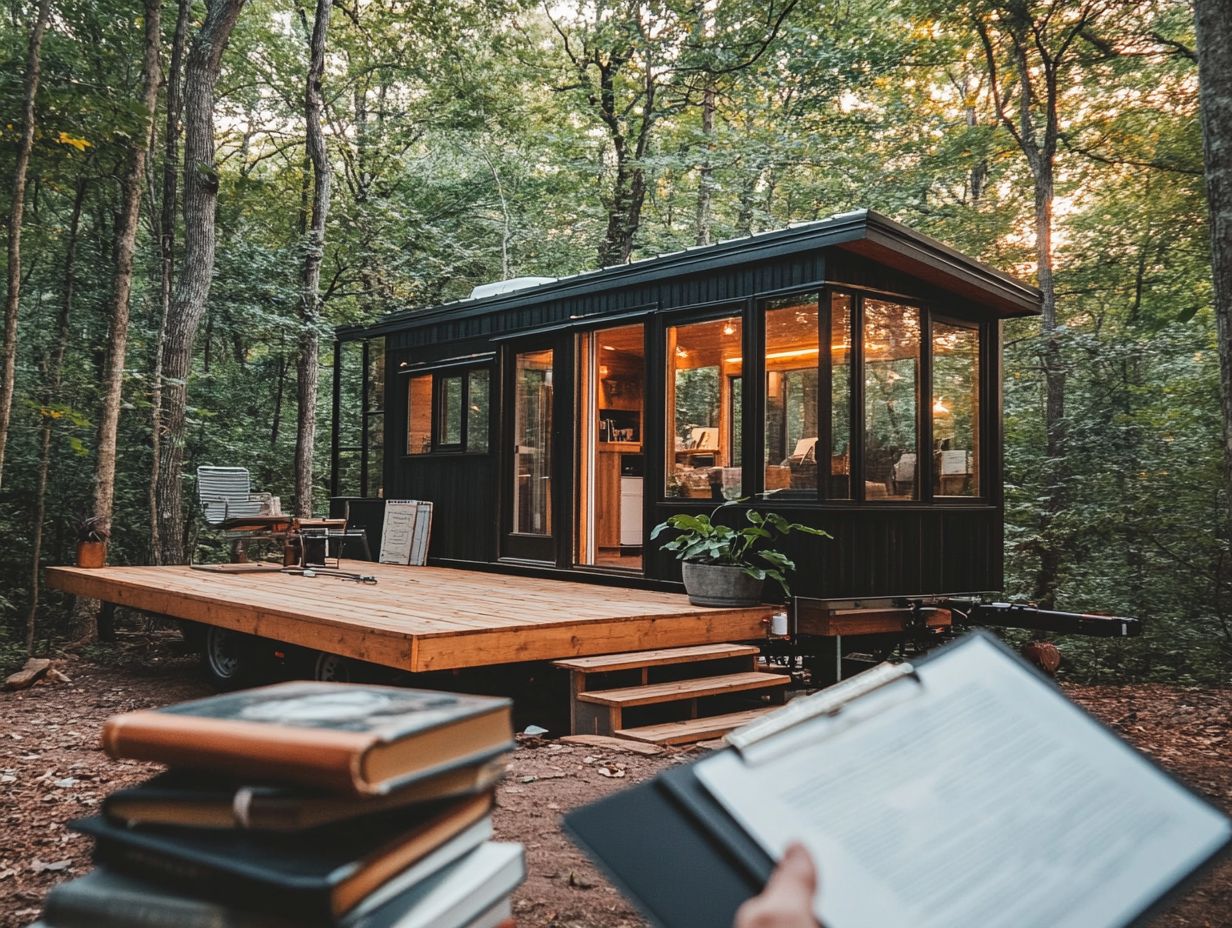
Legal and regulatory challenges can significantly complicate the insurance landscape for tiny houses, often leaving you feeling unprepared.
These obstacles arise from a patchwork of local building codes, zoning laws, and safety regulations that can vary dramatically from one jurisdiction to another. As a tiny house owner, you might find yourself wrestling with complex requirements regarding minimum square footage, foundation types, and permitted land use. To better understand these challenges, it’s essential to learn how to navigate tiny house legalities, all of which can directly impact your insurability.
If safety standards are insufficiently addressed, you could face elevated insurance premiums or, worse, outright denial of coverage. Understanding these nuances is essential, as they not only dictate how you can build and occupy your home but also play a crucial role in your financial protection against unexpected events. For those interested in tiny homes, navigating local ordinances for tiny houses is an important aspect to consider.
How to Find Affordable Insurance for Your Tiny House
Securing affordable insurance for your tiny house is essential for your financial security and peace of mind. Here are some tips and resources to help you navigate this process.
Tips and Resources for Finding the Right Coverage
Utilizing effective tips and resources can significantly simplify your quest for the right insurance coverage for your tiny house.
By evaluating various insurance providers, you can identify those that specialize in unique dwelling types like tiny homes. It’s important to understand the different types of coverage available, such as liability which protects you if someone gets hurt on your property and personal property protection, which covers your belongings. Additionally, when living in a tiny home, being aware of navigating tiny house community regulations can also help you make informed decisions about insurance needs.
Harnessing online resources like comparison websites and customer reviews can provide valuable insights, making informed decision-making more accessible. Gathering multiple quotes from different insurers not only clarifies costs but also uncovers nuances in policy offerings.
Engaging with qualified insurance agents can enhance this journey as they guide you through the complexities of coverage, ensuring you remain well-protected throughout your tiny home adventure.
Frequently Asked Questions
What is a tiny house and why would I need insurance for it?
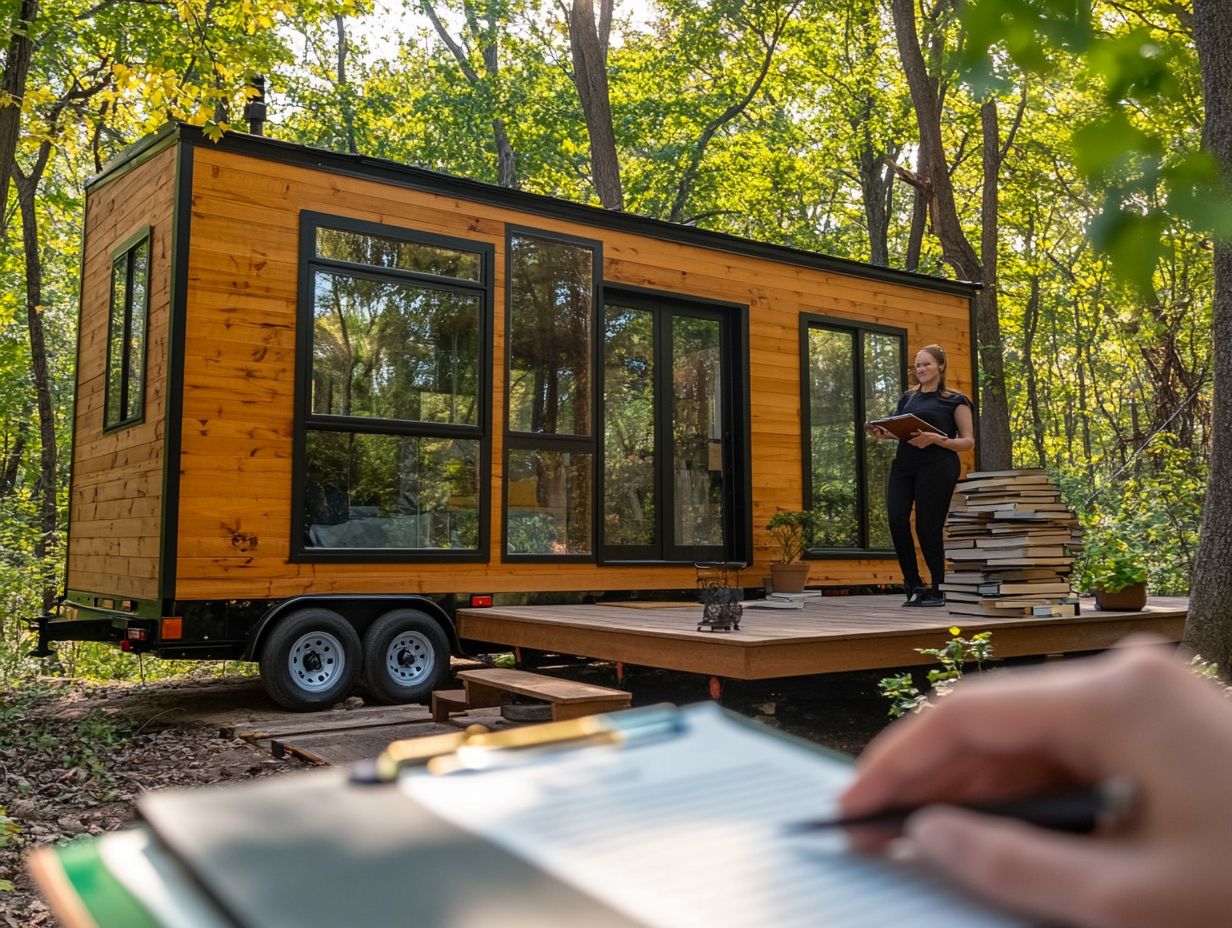
A tiny house is a small, compact living space that is typically less than 400 square feet. Many people choose to live in a tiny house because it is more affordable and environmentally friendly. However, just like any other residence, having insurance coverage is important in case of unexpected incidents or damages.
Are there specific insurance laws for tiny houses and ADUs?
Currently, there are no specific insurance laws for tiny houses. Depending on your location and the type of tiny house, it may fall under different insurance regulations. It’s important to research and consult with insurance providers to ensure you have the coverage you need.
What type of insurance coverage do I need for my tiny house or mobile home?
This will depend on how you intend to use your tiny house. If it is your primary residence, you will need homeowners insurance. If it is a rental property or used for business purposes, you may need different coverage. It’s best to discuss your specific needs with an insurance agent.
Can I get RV insurance for a tiny house that is on wheels?
Yes, you can get insurance for a tiny house on wheels. However, the coverage may differ from a traditional homeowners policy. You may need to explore specialty insurance options that cater to mobile or recreational homes.
What factors affect the cost of tiny house insurance?
The cost of insurance for a tiny house depends on several factors, including size, location, and intended use. Other considerations include the house’s value, materials used, and any additional features or amenities. It s advisable to get quotes from multiple insurance providers to find coverage that fits your needs and budget.
What should I consider when choosing an insurance provider for my tiny house or DIY builds?
When selecting an insurance provider for your tiny house, consider their coverage options, pricing, and reputation. Research customer reviews and ratings, as well as their experience insuring tiny houses. Asking for recommendations from other tiny house owners can also be helpful.
Don t wait! Start your search for affordable insurance today!

